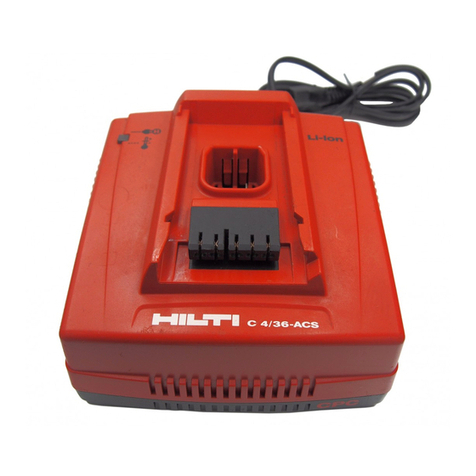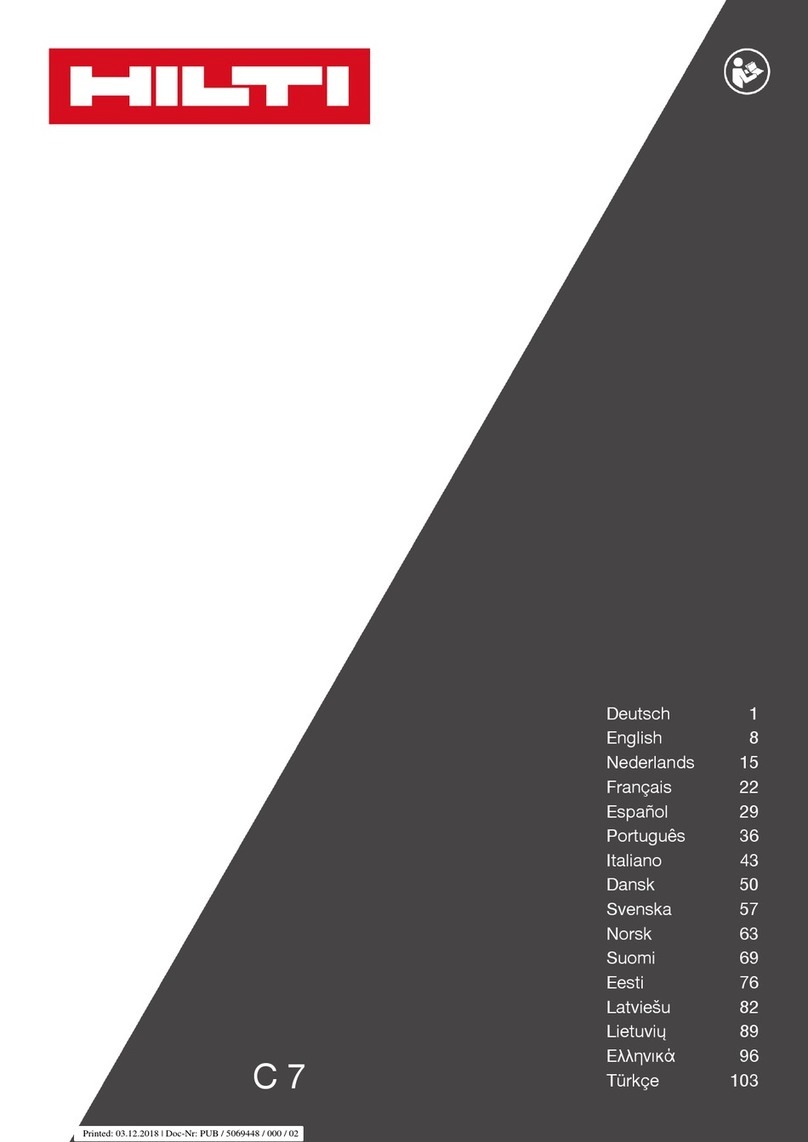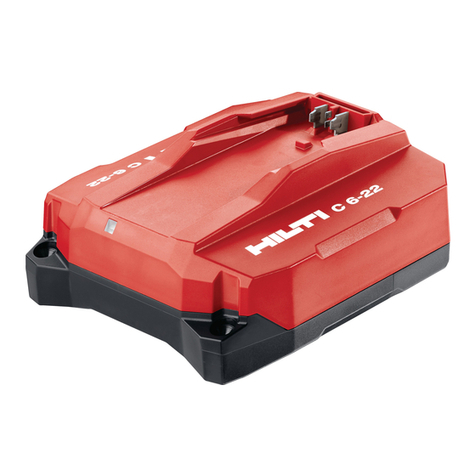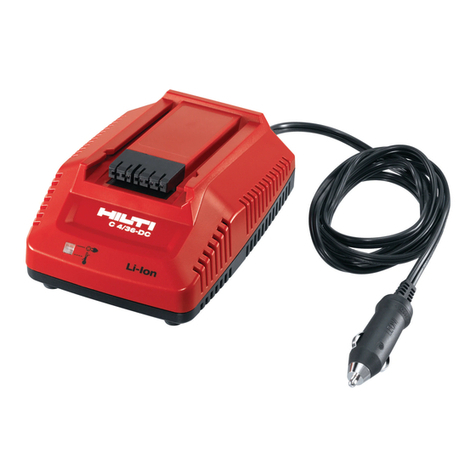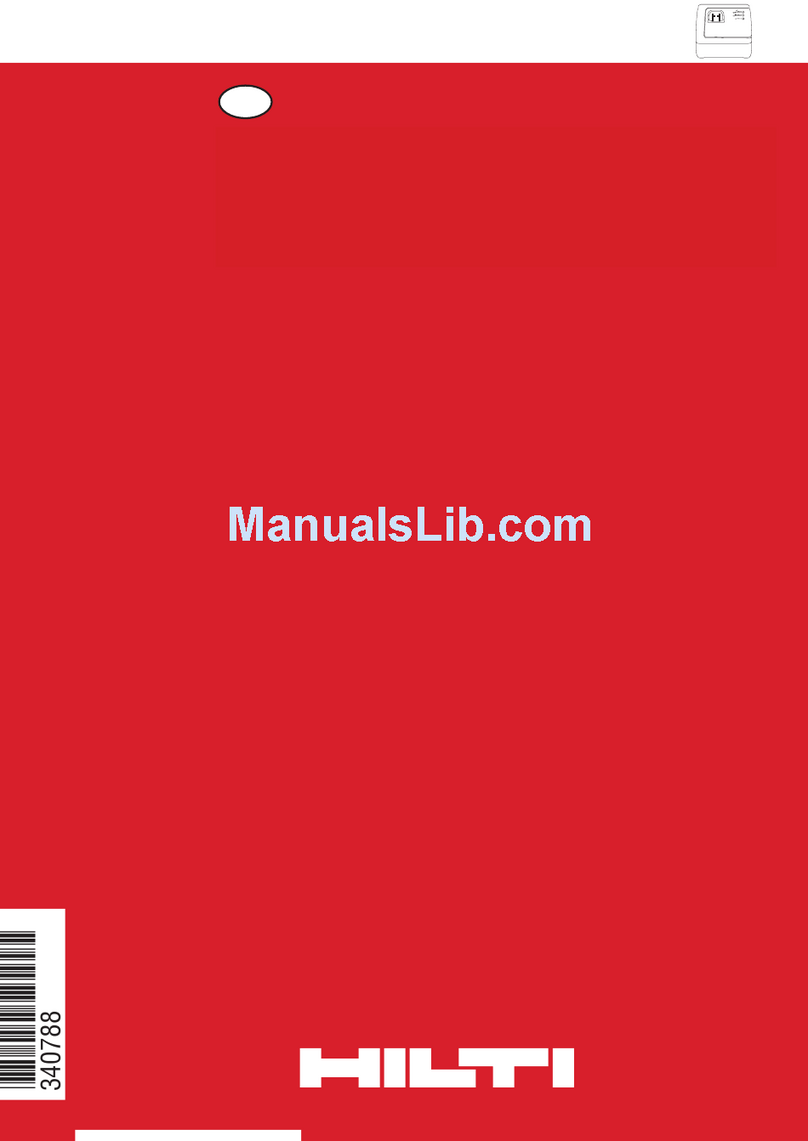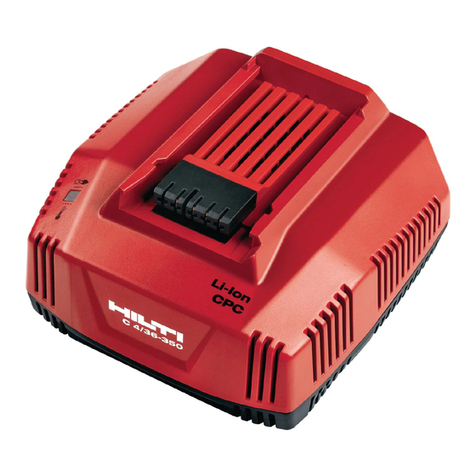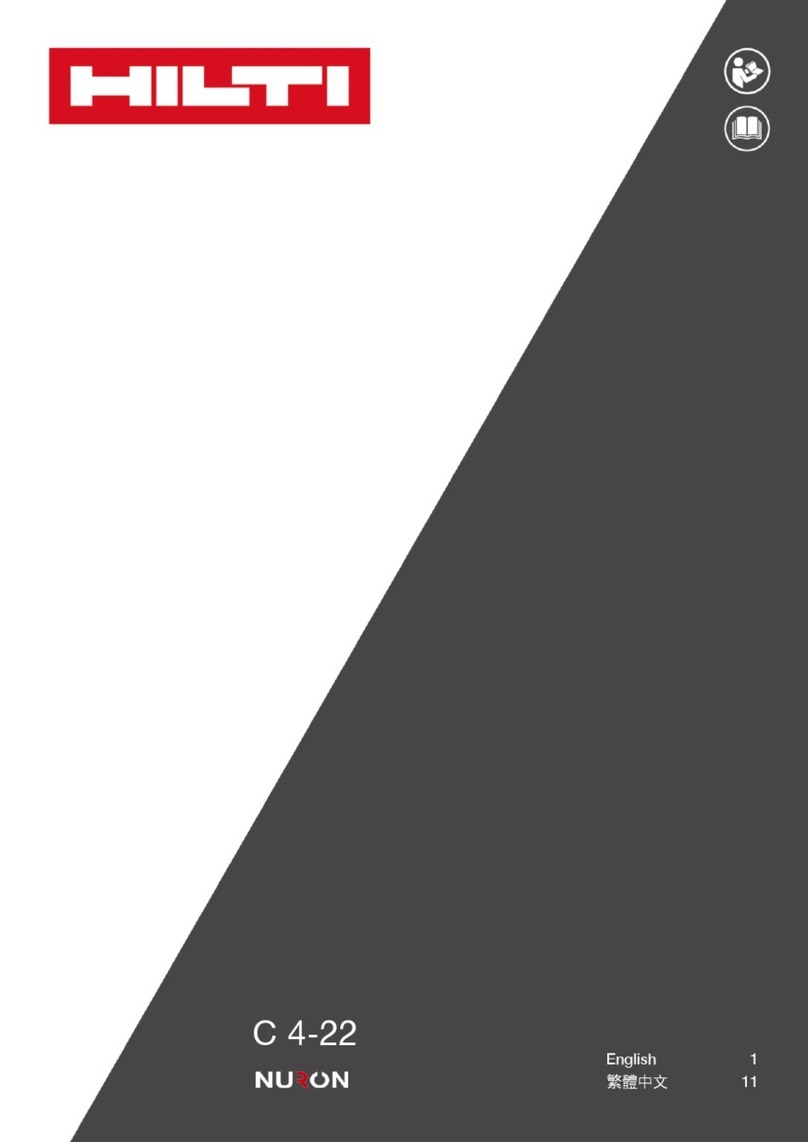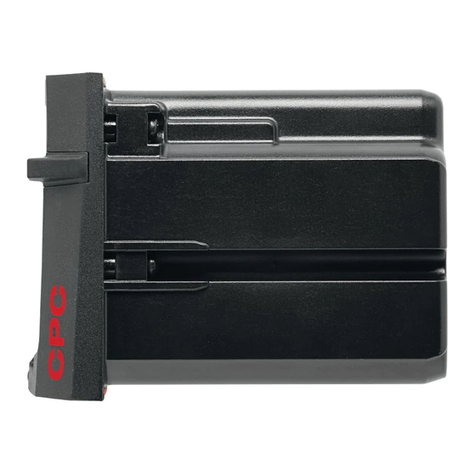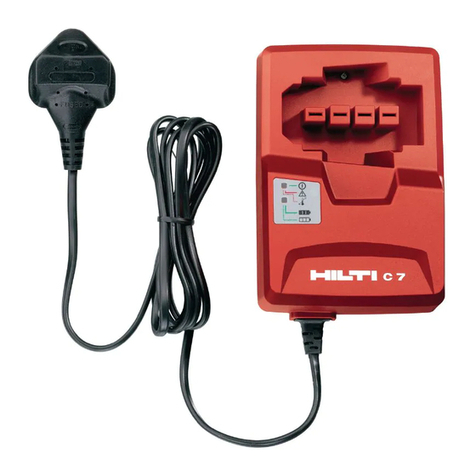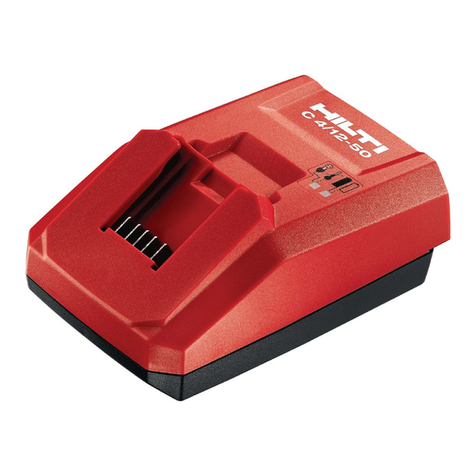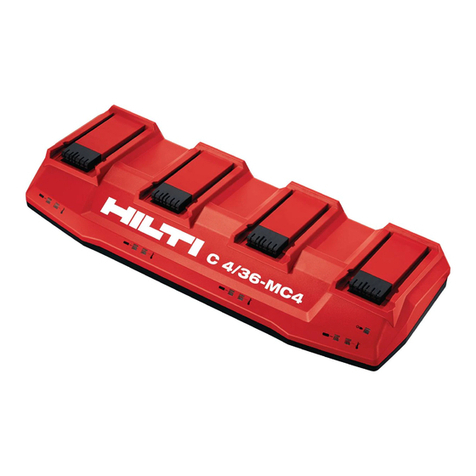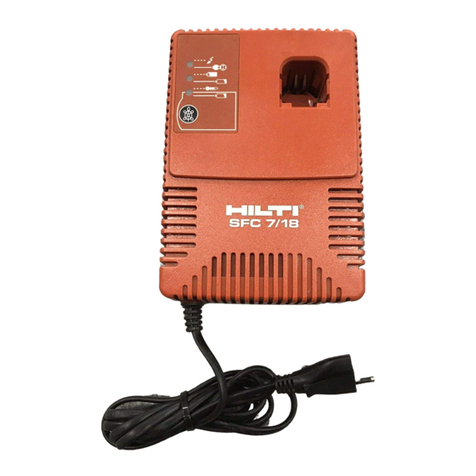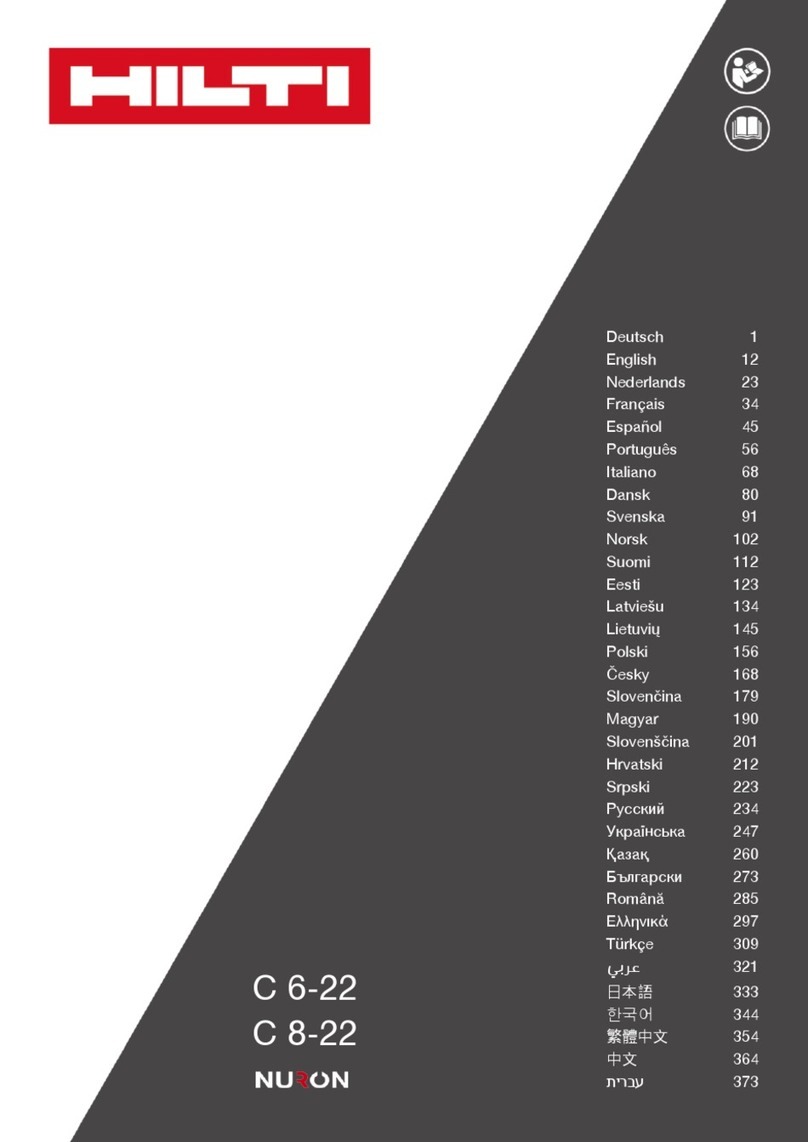en
6
4.1.4 Battery charger use and care
a) Use the charger only to charge the Hilti batteries approved for use
with this charger.
b) Do not use a charger if its casing or electric supply cord is defective.
c) Store chargers out of reach of children when not in use. Do not
allow persons unfamiliar with the appliance or these instructions to
operate it. Chargers are dangerous in the hands of untrained users.
d) Maintain the appliance carefully. Check to ensure that no parts are
broken or damaged in such a way that the appliance can no longer
function correctly. If damaged, have the appliance repaired before
use.
e) Use chargers and the corresponding batteries in accordance with
these instructions and as is specified for this particular model. Use
of chargers for applications different from those intended could result in
hazardous situations.
f) Recharge only with the charger specified by the manufacturer . A
chargerthatissuitableforonetypeofbatterypackmaycreateariskof
fire when used with another battery pack.
g) When not in use, keep the battery and the charger away from paper
clips, coins, keys, nails, screws or other small metal objects that
could cause a short circuit at the battery terminals or the charging
contacts. A short circuit at the battery terminals or charging contacts
could result in personal injury (burns) or fire.
h) Under abusive conditions, liquid may be ejected from the battery,
Avoid contact with the liquid. If contact accidentally occurs, flush
with water. If the liquid comes into contact with the eyes also
consult a doctor. Liquids ejected from the battery may cause irritation
or burns.
4.1.5 Service
Have your appliance repaired only by qualified specialists using only
genuine Hilti spare parts.This will ensure that the appliance remains safe
to use.
4.2 Additional safety precautions
4.2.1 Personal safety
a) Take care to ensure that the charger is standing in a steady, secure
position. A falling battery or charger may present a risk of injury to
yourself or others.
b) Avoid touching the contacts.
Printed: 14.02.2014 | Doc-Nr: PUB / 5170415 / 000 / 00
